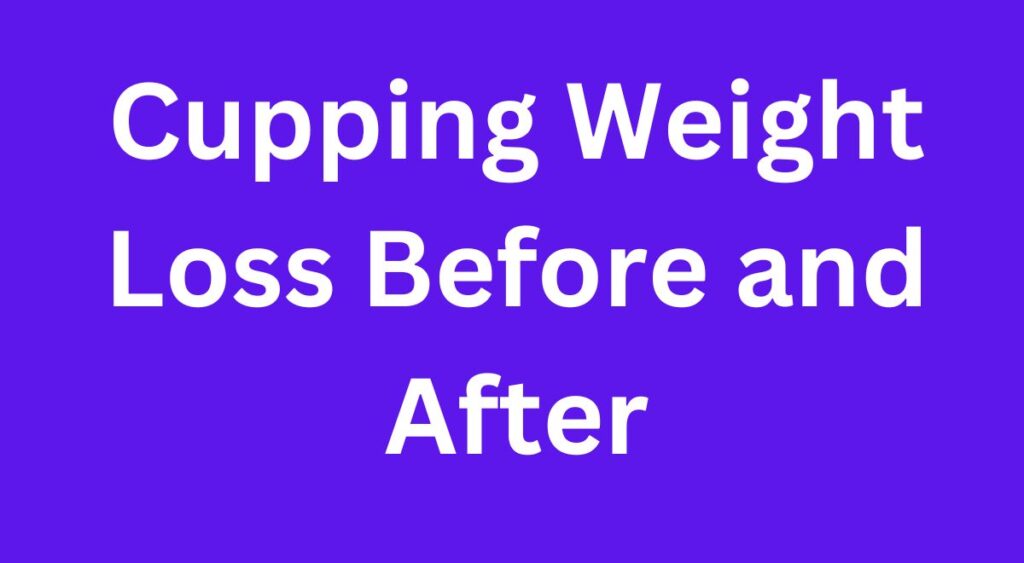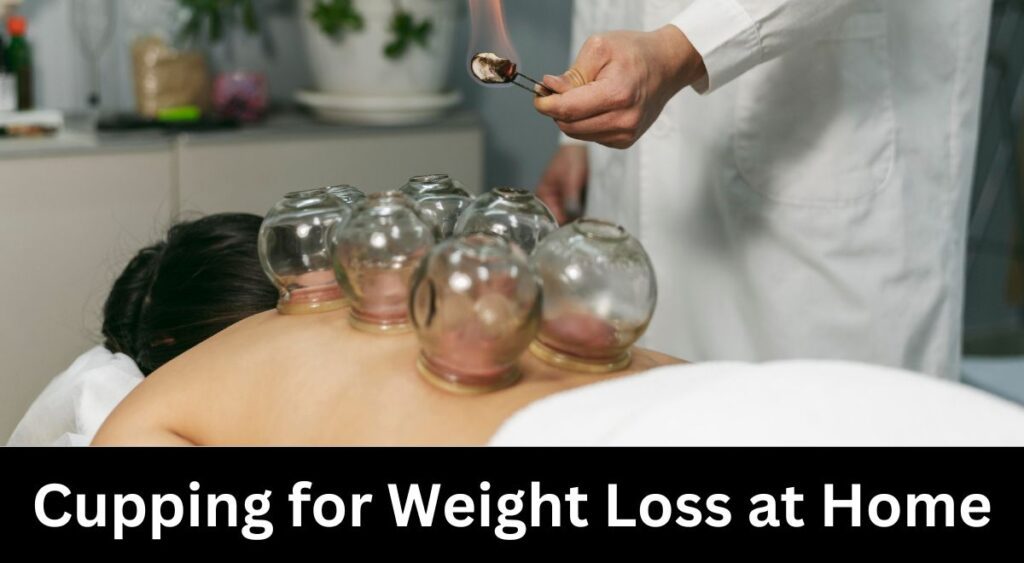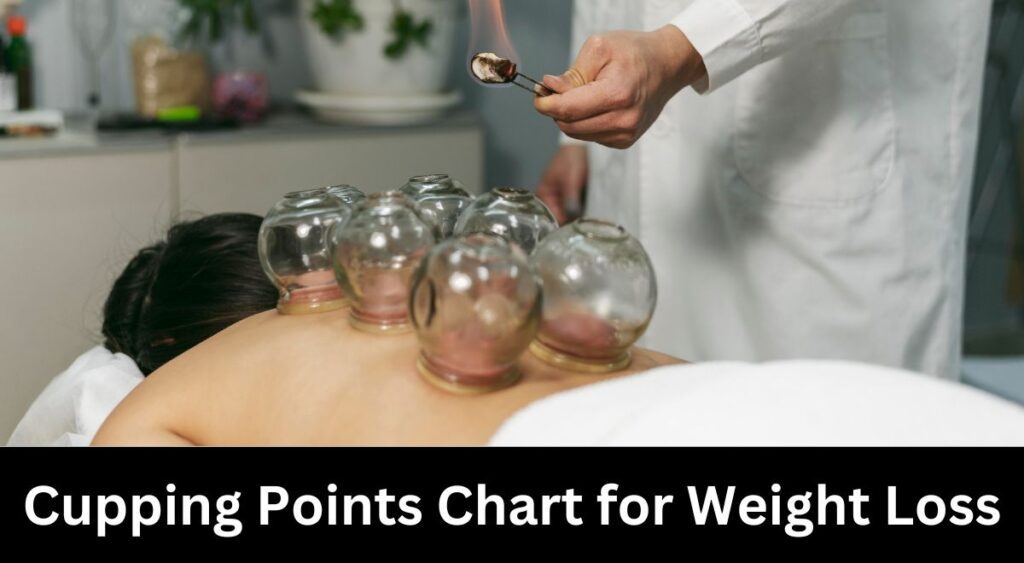Section 1: Introduction Cupping for Weight Loss in 2024
Cupping therapy is an ancient practice gaining popularity for its potential weight loss benefits. This blog post will explore everything you need to know about using cupping to shed those extra pounds. From the best cupping points to real-life before and after stories, we’ve got it all covered. Curious about how much weight you can lose with cupping or how to do it at home? Read on to discover the answers and start your weight loss journey with cupping today.
Section 2: How Cupping Works for Weight Loss
Cupping therapy has been around for centuries, but its application for weight loss is a more recent development. Let’s dive into how cupping can aid in shedding those extra pounds by examining its mechanisms and the evidence supporting its effectiveness.
Improved Blood Circulation
One of the primary ways cupping therapy aids in weight loss is by enhancing blood circulation. When the cups are applied to the skin, they create a suction effect that pulls blood to the surface. This increased blood flow helps to:
a. Nourish Tissues:
Improved circulation delivers more oxygen and nutrients to your tissues, promoting overall health and vitality.
b. Detoxification:
Enhanced blood flow assists in flushing out toxins from your body, which can support your metabolism and improve your body’s efficiency in burning fat.
Reduction of Inflammation
Chronic inflammation can hinder weight loss by disrupting hormonal balance and increasing fat storage. Cupping therapy helps to:
a. Alleviate Inflammatory Responses:
The suction created by the cups can reduce inflammation in the targeted areas, easing muscle tension and promoting relaxation.
b. Enhance Metabolic Function:
By reducing inflammation, cupping can improve your body’s metabolic rate, making it easier to burn calories and lose weight.
Stress Relief
Stress is a significant contributor to weight gain and difficulty in losing weight. It often leads to emotional eating and disrupts sleep patterns, both of which can sabotage weight loss efforts. Cupping therapy provides:
a. Relaxation:
The process of cupping can be deeply relaxing, helping to reduce stress levels. Lower stress means lower levels of cortisol, a hormone linked to fat storage, especially around the abdomen.
b. Improved Sleep:
Regular cupping sessions can improve sleep quality, which is essential for weight loss. Better sleep helps regulate hunger hormones and boosts energy levels for physical activity.
Scientific Perspectives and Anecdotal Evidence
While cupping therapy is rooted in traditional medicine, modern science has begun to explore its benefits. Several studies suggest that cupping can improve blood flow, reduce inflammation, and relieve muscle tension—all factors that can support weight loss. However, it’s essential to note that most scientific evidence is preliminary, and more research is needed to fully understand the impact of cupping on weight loss.
Anecdotal Evidence
Many people have reported positive outcomes from using cupping for weight loss. Personal testimonials often highlight experiences such as:
a. Visible Reduction in Cellulite:
Users report smoother skin and a decrease in the appearance of cellulite after regular cupping sessions.
b. Increased Energy Levels:
Many individuals feel more energized and motivated to maintain an active lifestyle, contributing to weight loss.
c. Enhanced Muscle Recovery:
Athletes and fitness enthusiasts use cupping to speed up muscle recovery, allowing them to train more effectively and burn more calories.
Combining Cupping with Other Weight Loss Strategies
While cupping therapy can support weight loss, it is most effective when combined with other healthy lifestyle choices. This includes:
a. Balanced Diet:
Eating a nutritious diet rich in whole foods, lean proteins, and healthy fats.
b. Regular Exercise:
Engaging in both cardio and strength training exercises to boost metabolism and build muscle.
c. Hydration:
Drinking plenty of water to aid in detoxification and keep your body functioning optimally.
Conclusion of Section 2
Cupping therapy can be a valuable addition to your weight loss toolkit. By improving blood circulation, reducing inflammation, and alleviating stress, it creates a conducive environment for weight loss. While scientific evidence is still emerging, many people have found success with cupping as part of their weight loss journey. Remember, for the best results, combine cupping with a healthy diet, regular exercise, and proper hydration.
Section 3: Where to Place Cupping for Weight Loss
Strategic placement of cupping therapy is essential for maximizing its effectiveness in targeting areas of the body where fat accumulation is a concern. Let’s explore the common cupping points for weight loss and why they are chosen.
Abdomen
The abdomen is a popular area for cupping therapy in weight loss programs. By targeting this region, cupping aims to:
a. Stimulate Digestion:
Cupping on the abdomen can help improve digestion and alleviate bloating, promoting a flatter stomach appearance.
b. Target Stubborn Fat:
Many people struggle with excess fat around the midsection, and cupping can aid in breaking down fat deposits in this area.
Thighs
The thighs are another common area where cupping is applied for weight loss purposes. Cupping therapy on the thighs can:
a. Reduce Cellulite:
Cupping may help break down cellulite and improve the appearance of the skin on the thighs.
b. Tighten Skin:
By increasing blood flow and promoting collagen production, cupping can tighten loose skin on the thighs, especially after weight loss.
Upper Arms
For those looking to tone and slim down their arms, cupping therapy on the upper arms may be beneficial. Cupping in this area can:
a. Enhance Muscle Definition:
By improving circulation and reducing inflammation, cupping can aid in muscle recovery and definition.
b. Target Flabby Arms:
Cupping can help tighten and firm the skin on the upper arms, reducing the appearance of sagging or flabbiness.
Back
Cupping therapy on the back can address various weight-related concerns, including:
a. Relieve Tension:
Cupping on the back can release tension in the muscles, promoting relaxation and reducing stress-related eating.
b. Improve Posture:
Better posture can make you appear slimmer and more confident, and cupping can help alleviate back pain and improve alignment.
Importance of Targeting Specific Areas
While cupping therapy can be applied to various parts of the body, targeting specific areas relevant to weight loss goals can yield more noticeable results. It’s essential to consider your individual body composition and areas of concern when determining where to place cupping for weight loss.
Conclusion of Section 3
Strategic placement of cupping therapy is crucial for optimizing its effectiveness in promoting weight loss. By targeting areas such as the abdomen, thighs, upper arms, and back, cupping aims to address common concerns such as excess fat, cellulite, and loose skin. When combined with a healthy diet and regular exercise, cupping in these areas can help you achieve your weight loss goals more effectively.
Section 4: Cupping Weight Loss Before and After
Visual evidence can be compelling when considering the effectiveness of cupping therapy for weight loss. Let’s explore real-life before and after stories, along with the factors that influence outcomes.

Case Studies and Testimonials
Many individuals have shared their experiences with cupping therapy for weight loss, often accompanied by striking before and after photos. These testimonials highlight:
a. Visible Reduction in Inches:
Users frequently report a noticeable decrease in waist circumference, thigh circumference, and overall body measurements after consistent cupping sessions.
b. Improved Skin Tone:
Cupping can lead to smoother, firmer skin and a reduction in the appearance of cellulite, contributing to a more toned and sculpted physique.
c. Enhanced Confidence:
Beyond physical changes, many individuals express feeling more confident and comfortable in their bodies after experiencing positive results from cupping therapy.
Visual Examples: Before and After Photos
Before and after photos provide tangible evidence of the transformative effects of cupping therapy for weight loss. These images often showcase:
a. Reduction in Cellulite:
Visible smoothing of skin texture and reduction in the dimpled appearance characteristic of cellulite.
b. Tighter Skin:
Firmer, more toned skin with a reduction in sagging or loose skin, particularly noticeable in areas like the abdomen, thighs, and arms.
c. Slimmer Silhouette:
A more streamlined body contour with a reduction in excess fat and a more defined appearance, especially around the waistline and hips.
Expected Results and Timeframes
It’s essential to manage expectations when considering cupping therapy for weight loss. While some individuals may experience dramatic results in a short period, others may require more time to see significant changes. Factors that influence outcomes include:
a. Consistency:
Regular and consistent cupping sessions are key to achieving optimal results. This often involves multiple sessions over several weeks or months.
b. Individual Body Composition:
Each person’s body responds differently to cupping therapy, depending on factors such as age, metabolism, genetics, and lifestyle habits.
c. Complementary Practices:
Results may be enhanced when cupping is combined with other weight loss strategies, such as a healthy diet, exercise, hydration, and stress management.
Conclusion of Section 4
Before and after stories, along with visual evidence, offer compelling insights into the potential effectiveness of cupping therapy for weight loss. While results may vary depending on individual factors, many people experience significant improvements in body composition, skin tone, and confidence after incorporating cupping into their wellness routine. It’s essential to approach cupping with realistic expectations and to combine it with other healthy lifestyle practices for the best outcomes.
Section 5: How Much Weight Can You Lose with Cupping?
Determining the exact amount of weight you can lose with cupping therapy is challenging due to various factors that influence outcomes. Let’s explore realistic expectations and the factors that play a role in weight loss through cupping.

Realistic Expectations
While cupping therapy can contribute to weight loss, it’s essential to maintain realistic expectations. Weight loss results vary significantly among individuals and depend on factors such as:
a. Starting Weight:
Those with higher initial body weights may experience more significant weight loss compared to individuals with less weight to lose.
b. Body Composition:
The distribution of fat and muscle in your body influences how noticeable weight loss is and where it occurs.
c. Lifestyle Habits:
Factors such as diet, exercise, stress levels, sleep quality, and hydration play a significant role in weight loss outcomes.
Factors Influencing Weight Loss Outcomes
Several factors influence the effectiveness of cupping therapy for weight loss:
a. Consistency:
Regular and consistent cupping sessions are essential for seeing results. Skipping sessions or inconsistency in treatment can impede progress.
b. Duration of Sessions:
Longer cupping sessions or sessions focused on multiple areas may yield more significant weight loss results.
c. Combination with Other Practices:
Pairing cupping therapy with a healthy diet, regular exercise, adequate hydration, and stress management can enhance weight loss outcomes.
Combining Cupping with Diet and Exercise
Cupping therapy is most effective when combined with other healthy lifestyle practices, including:
a. Balanced Diet:
Eating a nutritious, calorie-controlled diet rich in fruits, vegetables, lean proteins, and whole grains supports weight loss efforts.
b. Regular Exercise:
Engaging in both cardiovascular and strength-training exercises helps burn calories, build muscle, and boost metabolism.
c. Hydration:
Drinking plenty of water aids in digestion, detoxification, and appetite control, supporting overall weight loss efforts.
Monitoring Progress
Rather than focusing solely on the number on the scale, it’s essential to monitor various indicators of progress:
a. Measurements:
Tracking changes in body measurements, such as waist circumference, hip circumference, and body fat percentage, provides a more comprehensive view of progress than weight alone.
b. Energy Levels:
Increased energy levels, improved mood, better sleep quality, and enhanced physical performance can indicate positive changes associated with weight loss.
c. Non-Scale Victories:
Celebrating non-scale victories, such as fitting into smaller clothing sizes, noticing improvements in skin tone and texture, and receiving compliments on your appearance, reinforces progress and motivation.
Conclusion of Section 5
While cupping therapy can contribute to weight loss, the amount of weight you can lose varies depending on individual factors and lifestyle habits. Realistic expectations, consistency, and a holistic approach that combines cupping with a balanced diet, regular exercise, hydration, and stress management are essential for achieving sustainable results. Focus on overall health and well-being rather than solely on the number on the scale to measure progress effectively.
Section 6: Cupping for Weight Loss at Home
Performing cupping therapy at home offers convenience and flexibility for those seeking to incorporate it into their weight loss routine. Let’s explore the benefits, considerations, and step-by-step guide for cupping at home.

DIY Cupping Kits: Benefits and Drawbacks
DIY cupping kits are readily available for purchase online and in some retail stores. Benefits of using DIY cupping kits at home include:
a. Cost-Effectiveness:
DIY cupping kits are often more affordable than professional sessions, making them accessible to a broader range of individuals.
b. Convenience:
With a DIY kit, you can perform cupping therapy in the comfort of your own home, eliminating the need for appointments or travel.
c. Customization:
DIY kits typically include various cup sizes and types, allowing you to customize your treatment to target specific areas of concern.
However, there are also potential drawbacks to consider:
d. Safety Concerns:
Without proper training and guidance, there is a risk of applying cupping incorrectly, leading to bruising, skin irritation, or other adverse effects.
1. Limited Expertise:
Professional cupping therapists have extensive training and experience in assessing individual needs and performing cupping safely and effectively.
2. Quality of Equipment:
Some DIY cupping kits may contain lower-quality cups or materials, which could affect the efficacy and safety of the treatment.
Step-by-Step Guide to Performing Cupping at Home
If you decide to try cupping therapy at home, follow these steps for a safe and effective session:
a. Gather Your Supplies:
Ensure you have a cupping kit containing silicone or glass cups, a handheld pump or suction gun, and any necessary lubricant (e.g., oil or water).
b. Prepare Your Skin:
Cleanse and dry the area of the body where you will be applying the cups. Apply a small amount of lubricant to facilitate smooth movement of the cups.
c. Create Suction:
Place the cup over the desired area and use the handheld pump or suction gun to create suction. Start with gentle pressure and gradually increase as tolerated.
d. Monitor Sensations:
Pay attention to how the suction feels on your skin. It should be firm but not painful. If you experience discomfort or bruising, release some suction or remove the cup entirely.
e. Move the Cups:
Once the cups are in place, you can leave them stationary or move them around the target area using a gliding motion. Experiment with different techniques to find what works best for you.
f. Duration of Treatment:
The duration of cupping therapy sessions can vary depending on individual tolerance and treatment goals. Start with shorter sessions (e.g., 5-10 minutes) and gradually increase as you become more accustomed to the sensation.
g. Aftercare:
After removing the cups, gently massage the treated area to promote circulation and alleviate any residual marks. Drink plenty of water to aid in detoxification and hydration.
Safety Precautions
When performing cupping therapy at home, it’s essential to prioritize safety:
a. Avoid Broken Skin:
Do not apply cups over broken or irritated skin, as this can increase the risk of infection.
b. Monitor Pressure:
Pay attention to how your skin responds to the suction and adjust pressure as needed to prevent discomfort or injury.
c. Seek Professional Guidance:
If you’re unsure about how to perform cupping safely or have any underlying health conditions, consult a qualified cupping therapist or healthcare professional before proceeding.
Conclusion of Section 6
Performing cupping therapy at home can be a convenient and cost-effective way to incorporate this ancient practice into your weight loss routine. However, it’s essential to approach home cupping with caution, prioritize safety, and seek professional guidance if needed. By following a step-by-step guide and taking appropriate precautions, you can enjoy the benefits of cupping therapy from the comfort of your own home.
Section 7: Cupping Points Chart for Weight Loss
Strategic placement of cups on specific points of the body is crucial for optimizing the effectiveness of cupping therapy for weight loss. Let’s explore a detailed cupping points chart, highlighting key points and their associated benefits.

Cupping Points Chart
a. Abdomen:
1. Location:
Place cups along the midline of the abdomen, focusing on areas with excess fat or bloating.
2. Benefits:
Stimulates digestion, reduces bloating, aids in fat breakdown.
b. Thighs:
1. Location:
Apply cups to the front, sides, and back of the thighs, targeting cellulite and fatty deposits.
2. Benefits:
Improves skin texture, reduces cellulite, tones thigh muscles.
c. Upper Arms:
1. Location:
Target the triceps area by placing cups along the back of the upper arms.
2. Benefits:
Tightens loose skin, tones arm muscles, enhances definition.
d. Back:
1. Location:
Focus cups on the upper and lower back, particularly areas of tension or discomfort.
2. Benefits:
Relieves muscle tension, improves posture, aids in stress reduction.
Explanation of Each Point’s Significance and Benefits
a. Abdomen:
Cupping on the abdomen stimulates digestion and enhances fat metabolism, leading to a flatter stomach and reduced bloating.
b. Thighs:
Cupping on the thighs helps break down cellulite, improves circulation, and tightens skin for a smoother appearance.
c. Upper Arms:
Targeting the triceps with cupping can tighten loose skin, tone muscles, and reduce the appearance of flabbiness.
d. Back:
Cupping on the back alleviates muscle tension, promotes relaxation, and supports overall stress reduction, which can indirectly aid in weight loss by reducing emotional eating.
Tips for Accurate Placement
a. Consult a Cupping Therapist:
If possible, seek guidance from a qualified cupping therapist to ensure proper placement of cups for your individual needs.
b. Use Reference Guides:
Utilize cupping points charts and reference materials to identify key points on the body and their associated benefits.
c. Start Slowly:
Begin with gentle suction and gradually increase pressure as you become more comfortable with cupping therapy.
d. Listen to Your Body:
Pay attention to how your body responds to cupping and adjust placement and pressure accordingly to avoid discomfort or bruising.
Conclusion of Section 7
A cupping points chart serves as a valuable guide for targeting specific areas of the body during cupping therapy for weight loss. By strategically placing cups on key points such as the abdomen, thighs, upper arms, and back, you can maximize the benefits of cupping and support your weight loss goals. Remember to consult a professional or reference reliable resources to ensure accurate placement and safe practice of cupping therapy.
Section 8: How Often Should You Do Cupping for Weight Loss?
Determining the frequency of cupping therapy sessions for weight loss depends on various factors, including individual goals, tolerance, and response to treatment. Let’s explore guidelines for how often you should do cupping for weight loss and considerations to keep in mind.

Recommended Frequency Based on Goals and Individual Response
a. Initial Phase:
- For those new to cupping therapy, start with 1-2 sessions per week to allow your body to adjust to the treatment and gauge your response.
- Monitor how your body responds to cupping, including any changes in weight, body measurements, and overall well-being.
b. Maintenance Phase:
- Once you’re comfortable with cupping therapy and have established a routine, aim for 1-2 sessions every 2-4 weeks for maintenance.
- Adjust frequency based on your weight loss goals, lifestyle factors, and individual response to treatment.
Signs to Watch for Overuse or Misuse
a. Bruising:
Excessive bruising or skin discoloration may indicate that you’re applying too much suction or leaving cups in place for too long.
b. Skin Irritation:
Redness, itching, or irritation at the cupping site could be a sign of sensitivity to the treatment or improper placement of cups.
c. Fatigue or Soreness:
Feeling overly fatigued or experiencing muscle soreness beyond what is typical may indicate that you’re overdoing it with cupping sessions.
Integrating Cupping into a Broader Wellness Routine
a. Combine with Other Therapies:
Consider incorporating cupping therapy into a holistic wellness routine that includes other complementary therapies such as acupuncture, massage, and yoga.
b. Listen to Your Body:
Pay attention to how your body responds to cupping and adjust the frequency and intensity of sessions accordingly to avoid overuse or burnout.
c. Consult with Professionals:
If you’re unsure about how often to do cupping for weight loss or have specific health concerns, consult with a qualified cupping therapist or healthcare professional for personalized guidance.
Conclusion of Section 8
The frequency of cupping therapy sessions for weight loss should be tailored to individual goals, tolerance, and response to treatment. Starting with 1-2 sessions per week during the initial phase allows you to acclimate to the treatment, while maintenance sessions every 2-4 weeks can help sustain results over time. Monitoring signs of overuse or misuse, integrating cupping into a broader wellness routine, and seeking professional guidance when needed are essential considerations for optimizing the effectiveness and safety of cupping therapy for weight loss.
Section 9: Cupping for Weight Loss on Reddit
Reddit serves as a platform for individuals to share experiences, ask questions, and seek advice on various topics, including cupping for weight loss. Let’s delve into popular Reddit threads and discussions related to cupping therapy for weight loss, common questions, and personal experiences shared by users.

Overview of Popular Reddit Threads and Discussions
a. r/WeightLoss:
- Users in this subreddit often discuss various weight loss methods, including cupping therapy. Threads may include questions about the effectiveness of cupping, personal experiences, and recommendations from others who have tried it.
b. r/AlternativeHealth:
- Discussions in this subreddit focus on alternative health practices, including cupping therapy. Users may share success stories, ask for advice on incorporating cupping into their weight loss journey, or seek recommendations for reputable practitioners.
c. r/Cupping:
- This subreddit specifically dedicated to cupping therapy features discussions on a wide range of topics related to cupping, including its potential benefits for weight loss. Users may share tips, techniques, and resources for incorporating cupping into their wellness routine.
Common Questions and Answers from the Reddit Community
a. Does Cupping Really Work for Weight Loss?
Users often ask about the efficacy of cupping therapy for weight loss and share their personal experiences. Responses may vary, with some users reporting positive results while others express skepticism.
b. Best Cupping Techniques for Weight Loss?
Discussions often center around the most effective cupping techniques and placements for targeting areas of the body associated with weight loss, such as the abdomen, thighs, and arms.
c. DIY Cupping vs. Professional Sessions?
Users debate the pros and cons of performing cupping therapy at home using DIY kits versus seeking treatment from a professional cupping therapist. Factors such as cost, convenience, and safety are commonly discussed.
Personal Experiences and Advice Shared by Users
a. Success Stories:
- Users share their success stories of incorporating cupping therapy into their weight loss journey, often accompanied by before and after photos. These testimonials provide insights into the potential benefits of cupping for weight loss.
b. Tips for Beginners:
- Experienced users offer tips and advice for those new to cupping therapy, including recommendations for proper technique, equipment selection, and integration into a broader wellness routine.
c. Cautionary Tales:
- Some users share cautionary tales of negative experiences or adverse effects from cupping therapy, such as bruising, skin irritation, or discomfort. These stories serve as reminders to approach cupping with caution and seek professional guidance when needed.
Conclusion of Section 9
Reddit serves as a valuable platform for individuals to learn about cupping therapy for weight loss, share experiences, and seek advice from the community. Common discussions include questions about efficacy, best practices, DIY versus professional sessions, and personal success stories. By participating in these discussions and learning from the experiences of others, individuals can make informed decisions about incorporating cupping into their weight loss journey. As always, it’s essential to approach cupping therapy with caution, prioritize safety, and consult with a qualified healthcare professional if needed.
Section 10: Conclusion of Article
Exploring cupping therapy for weight loss reveals a multifaceted approach to wellness that integrates ancient techniques with modern understanding. Through understanding the mechanisms behind cupping’s potential benefits, strategic placement of cups, and considerations for frequency and safety, individuals can embark on a holistic journey towards achieving their weight loss goals.
Moreover, the insights shared within Reddit communities offer a rich tapestry of experiences, from success stories to cautionary tales, empowering individuals to make informed decisions and navigate their own unique path towards better health. As with any wellness practice, it’s essential to approach cupping therapy with mindfulness, listen to one’s body, and seek professional guidance when needed. Ultimately,
by embracing the possibilities of cupping therapy within a broader framework of holistic wellness, individuals can unlock new avenues towards sustainable weight loss and improved well-being.
Section 11: FAQs For Cupping For Weight Loss
1. Can You Do Cupping on Your Belly?
Yes, you can do cupping on your belly. Cupping on the abdomen is a common practice for targeting stubborn fat and improving digestion. When applied to the belly, cupping can help:
Break Down Fat Deposits: The suction effect promotes blood circulation, which can aid in the breakdown of fat cells.
Improve Digestion: Cupping can stimulate the digestive organs, helping to reduce bloating and improve overall digestion.
Reduce Bloating: Enhanced circulation in the abdominal area can help alleviate bloating, contributing to a flatter stomach appearance.
2. Does Cupping Tighten Belly Skin?
Cupping can help tighten belly skin by improving blood circulation and promoting collagen production. The increased blood flow to the cupped area can:
Enhance Skin Elasticity: Improved circulation delivers more nutrients and oxygen to the skin, promoting elasticity and firmness.
Stimulate Collagen Production: The suction and release action can stimulate collagen production, which helps tighten and tone the skin.
Reduce Cellulite: Regular cupping can reduce the appearance of cellulite, leading to smoother and tighter skin on the belly.
3. What is the Best Area for Cupping?
The best area for cupping depends on your specific goals. Common areas for cupping therapy include:
Abdomen: Ideal for targeting belly fat, improving digestion, and reducing bloating.
Thighs: Effective for reducing cellulite, toning the skin, and breaking down fat deposits.
Upper Arms: Useful for tightening loose skin and enhancing muscle definition in the arms.
Back: Beneficial for relieving muscle tension, improving posture, and reducing stress.
By strategically placing cups on these areas, you can maximize the benefits of cupping therapy for weight loss and overall wellness.
Section 12: Related Posts
1. Is Shrimp Fried Rice Good For Weight Loss?
2. Chair Yoga For Weight Loss in 2024
3. Sleep Hypnosis Weight Loss in 2024


